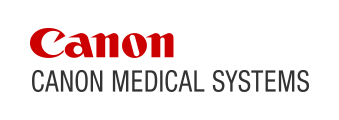
The trade-off between radiation exposure and image quality
The target for optimization is the point where the combined net risk is minimized.3
Despite the guidelines, a wide distribution of
LCS CT doses across facilities continues to be reported.4
Strategies for reducing radiation dose while preserving image quality

Effective screening
program for asymptomatic
at-risk individuals
96%
of low-dose chest CT scans (0.44 mSv)were reported to be of diagnostic
quality in a recent study.17
Hardware and software that can help you optimize the implementation of the LDCT protocol

NEXT edition
References:
1. Cavers D, et al. Respir Res. 2022;23(1):374. 2. Barrett HH, et al. Phys Med Biol. 2015;60(2):R1-R75. 3. ICRP PUBLICATION 154. Ann ICRP. 2023;52(3):11-145. 4. Demb J, et al. JAMA Intern Med. 2019;179(12):1650-1657. 5. Pereira LF, et al. J. Bras. Pneumol. 2024;50(01):e20230233. 6. Snoeckx A, et al. Transl Lung Cancer Res. 2021;10(5):2356-2367. 7. ESTI LCS technical standards. 2019. Available from: https://www.myesti.org/content-esti/uploads/ESTI-LCS-technical-standards_2019-06-14.pdf. Accessed October 18, 2024. 8. China Lung Oncology Group. Chin J Lung Cancer. 2023;26(1):1-9. 9. Dudhe SS, et al. Cureus. 2024;16(5). 10. National Lung Screening Trial Research Team. N Engl J Med. 2011;365(5):395-409. 11. Pozzessere C, et al. Tomography. 2023;9(1):166-177. 12. Larke FJ, et al. AJR Am J Roentgenol. 2011;197(5):1165-1169. 13. Macri F, et al. Diagn Interv Imaging. 2016;97(11):1131-1140. 14. Gobi K, et al. Pol J Radiol. 2022;87:e597-e605. 15. Paks M, et al. Medicine (Baltimore). 2018;97(34):e12019. 16. Ludwig M, et al. BMJ Open. 2019;9(8):e025661. 17. Kim Y, et al. AJR Am J Roentgenol. 2015;204(6):1197-1202. 18. Newell Jr JD, et al. Invest Radiol. 2015;50(1):40-45. 19. Kroft LJ, et al. J Thorac Imaging. 2019;34(3):179-186. 20. Greffier J, et al. Diagn Interv Imaging. 2020;101(6):373-38. 21. Golbus AE, et al. Eur Radiol. 2024;34(9):5613-5620. 22. McLeavy CM, et al. UKIO Online. 2020;P094:5. 23. Golbus AE, et al. Eur J Radiol Open. 2024;13:100578.






